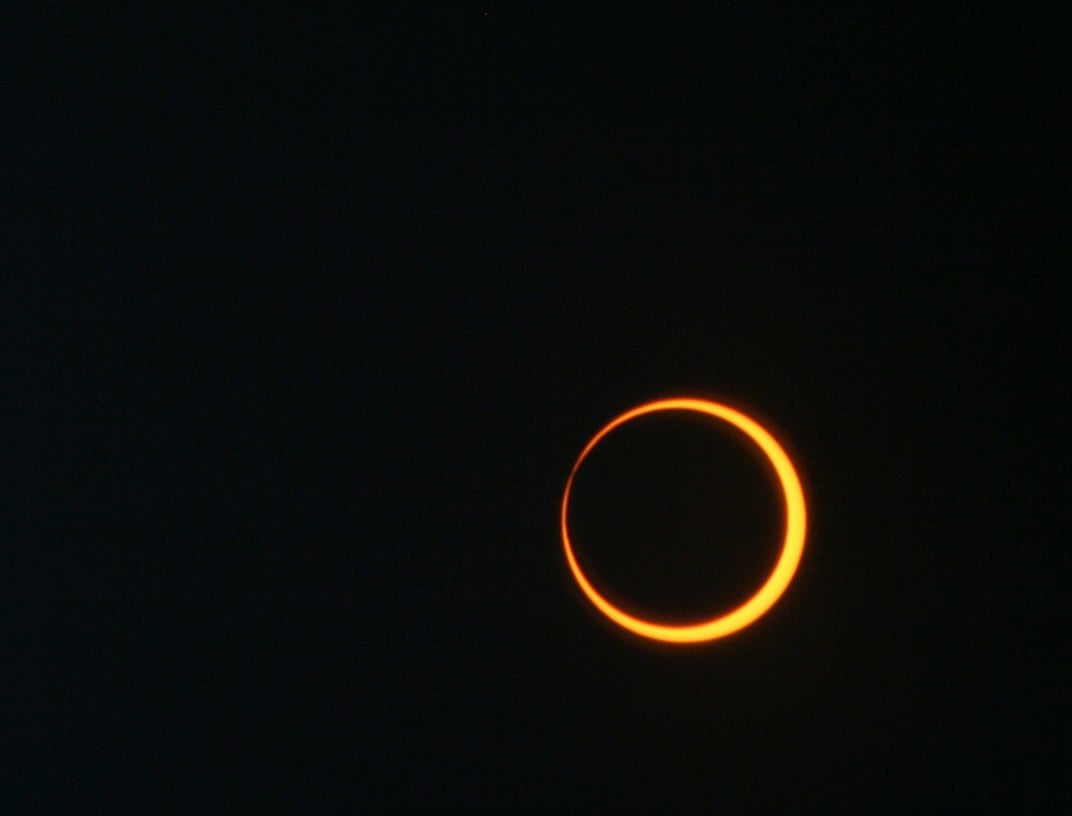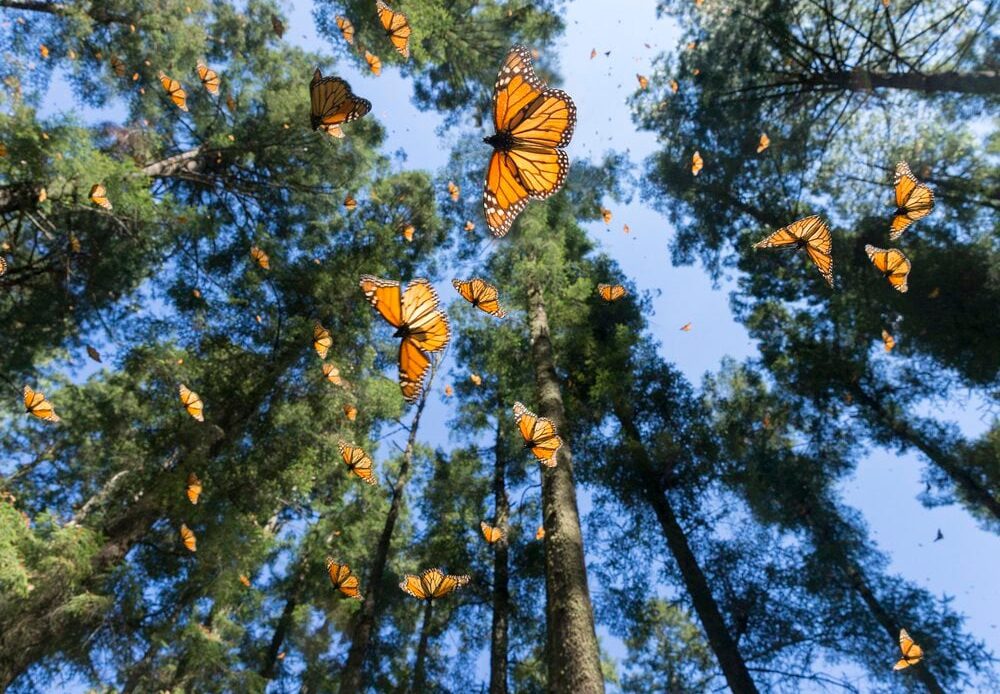About 100 miles northwest of Mexico City in the UNESCO-designated Monarch Butterfly Biosphere Reserve, up to a billion of the brilliant-winged insects spend November to March clustered on branches.
Sylvain Cordier/Getty Images
Travel satisfies and whets our appetite for wonder all at once. The more you explore, the more you realize just how much more there is of the world to see. These eight magnificent and unusual natural sights call for careful planning from spectators—and if you make the effort to coincide with them, your view of everything else might change as well.
Annular eclipse; Albuquerque, New Mexico
An annular solar eclipse photographed on May 20, 2012. NASA/Bill Dunford
Not all solar eclipses are created alike. They all happen when the moon passes between us and the sun, casting a shadow over the earth. When the moon is close enough to Earth to cover the entire sun, a total eclipse occurs. When it’s farther away, on the other hand, the full solar disk isn’t covered, and a dramatic band of light surrounds it. “We see a ring around the black moon disk, sometimes called the ‘ring of fire,’ so we call this ‘annular eclipse,’” explains Ylva Pihlström, the associate director of the Center for Astrophysical Research and Technologies at the University of New Mexico. An annular eclipse will cross the United States on October 14, 2023, entering in Oregon at 9:13 a.m. PDT and exiting through Texas at 12:03 p.m. CDT. To see the full ring, you’ll need to be in the path of annularity—and the skies must be clear. Albuquerque is one of the American cities most likely to meet both of those conditions. There, “the full ring of fire will be seen for about 4 minutes and 48 seconds, peaking close to 10:37 a.m.,” Pihlström says. Her university will be hosting a free, public viewing party in an athletic field with stations where visitors can build solar viewers and learn more about eclipses. “In one of the Physics and Astronomy lecture halls we have a heliostat, which projects the solar disc inside the room and will allow people to enjoy this way of viewing the sun and the eclipse,” she adds.
Firefly squid; Toyama Bay, Japan
Firefly squid
The diminutive…
Click Here to Read the Full Original Article at Travel | smithsonianmag.com…
